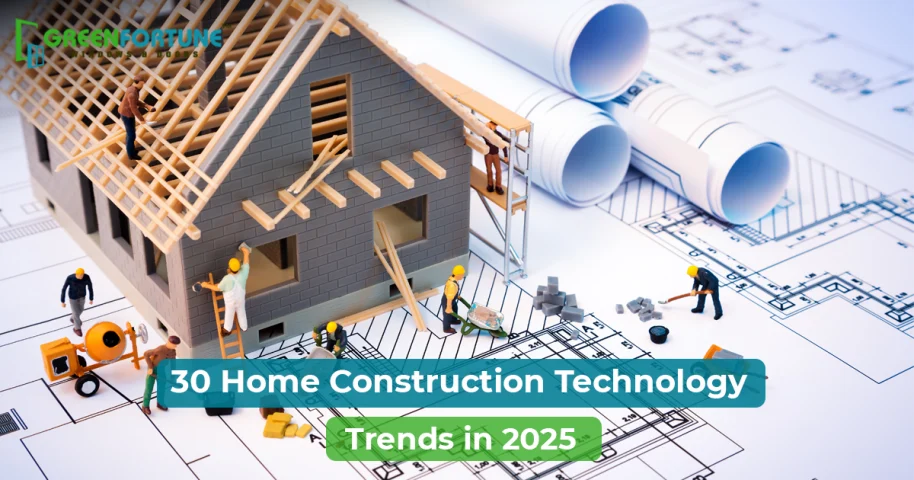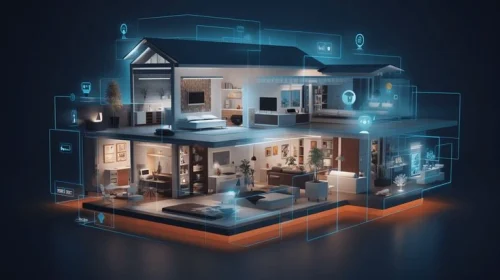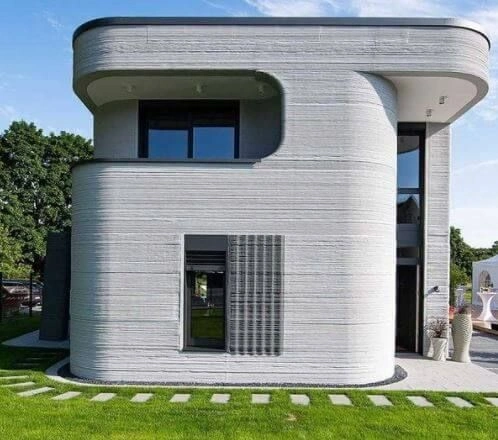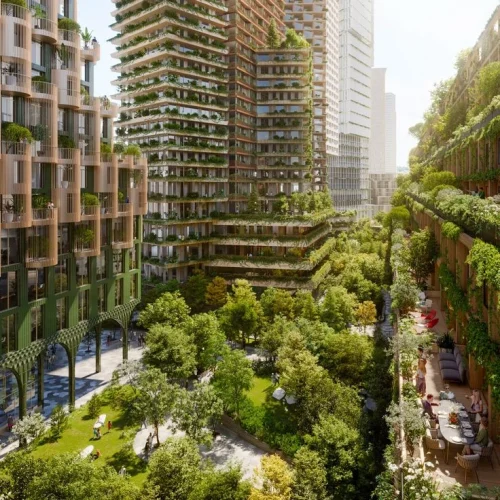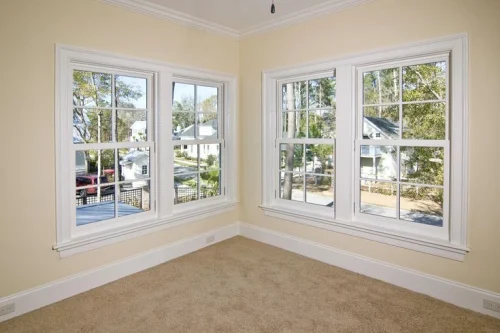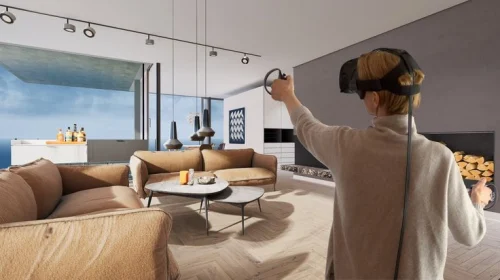
Top 10 Stylish & Practical Outdoor Steps Design For Modern Indian Homes
May 30, 2025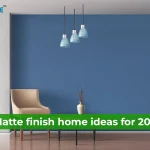
Matte Finish Home Designs: 2025 Trends For Every Room
May 30, 2025Long gone are the days when building a house was considered a herculean task. Things have changed; no more delays, cost overruns, poor planning, or constantly running behind contractors.
With home construction technology, everything has become smarter, faster and predictable. These innovations not just save you time and money, but also help you avoid stress and plan better from the start.
So, if you are thinking of building or renovating your home in 2025, here are 30 innovations in home construction technology you should know.
Also read: 10+ Vastu Shastra building construction rules for a prosperous home.
Home Construction Technology is Changing Everything!
- Smart Planning & Design
- 3D house walkthroughs
Even before you build your home, you can take a virtual tour with 3D house walkthroughs. This helps you see the structure, layout, and flow of the house and be 100% sure before starting.
- Drones for site mapping
Builders now use drones to scan your land and check slope, soil condition or drainage problems. This saves you from big mistakes.
- AI tools for house plans
There are AI tools now that suggest better layouts based on your plot, light and wind flow. This helps you plan smarter without hiring extra experts. Some AI tools are Spacemaker AI, TestFit, Higharc, Makemyhouse, Hypar, etc.
- BIM (Building Information Modelling)
BIM helps builders avoid design clashes between plumbing, structure, and wiring. This reduces rework and errors.
- Digital twins
It’s more like a digital copy of your home, but updated in real-time. It helps you monitor wear, repairs and future upgrades. It’s very useful in high-budget projects.
- Construction manufacture software
Builders now use tracking software to manage labour, client communication, materials, budget, and tasks better. Some of the construction manufacturing software tools include Procore, Buildertrend, CoConstruct, PlanGrid, Autodesk Construction Cloud, etc.
Also read: Top essential materials used in construct
Faster & Better Building Techniques
- Prefab construction
Instead of doing everything at the site, now builders prefer parts of your home, like walls or the roof, to be built in a factory and assembled on-site. This way, it’s cleaner, faster and has a better finish. It is one of the best examples of how home construction technology is cutting down delays and improving quality.
- 3D printing for houses
Houses can now be 3D-printed using concrete, especially in smaller plots at lower costs. It reduces time and labour. This could be our future!
- Bricklaying robots
In places of labour shortage, some builders use robots to lay bricks perfectly and faster. With automation in construction, there’s no space for mistakes.
- Automated steel bending & cutting
Steel rods are now shaped using machines instead of manual labour. This ensures labourers’ safety, perfect accuracy and avoids material wastage.
- Lightweight bricks (Fly-Ash or ACC Blocks)
Nowadays, builders prefer fly-ash or ACC blocks for construction over red bricks, as they keep homes cooler and reduce structural load.
- Living building materials
For instance, living concrete can grow or repair itself using bacteria. Though it’s not common, living building materials are definitely gaining popularity among builders. More examples include biocement, mycelium bricks, and algae-infused facades.
Also read: 3D printing construction: All you need to know.
Green Building Technologies
- Solar Roof Tiles
Instead of normal panels, roof tiles now come with solar power built in. This way, you get clean power without bulky setups.
- Net-zero homes
These homes are known as ‘net-zero’ because they don’t rely fully on outside electricity. They produce the same amount of energy they use through solar panels, natural cooling, and energy-saving materials.
- Cool Roof Coatings
In India, summers are brutal, and we know it. Roof paints or tiles that reflect sunlight and reduce heat are used to combat the heat.
- Rainwater harvesting systems
It’s a lost trend that is gaining back its spot. Many homes now include underground tanks or filter pits at the construction stage to save rainwater.
- Water-saving fixtures
Toilet flush, taps, washbasins, and showers are now designed to use less water to save money without affecting pressure.
- Waste management during construction
Waste thrown in landfill sites can release toxins, pollute land, ground and water. Builders are now separating wet, dry and cement waste from Day 1, to help reduce landfill and keep sites cleaner.
- Carbon-neutral materials
Taking the environment into consideration, nowadays bricks and concrete mixes are made with recycled or low-carbon ingredients to cut down the emissions.
- Green Building Certificate
You can now get your home certified as a “green home”, which boosts resale value and gives you discounts on some home loans.
Also read: Top rooftop cooling solutions to beat the heat at home.
Smarter Interior & Finishes
- Self-healing concrete
The name self-healing concrete means, when this concrete cracks slightly, it seals itself with rain or moisture. This prevents future repairs and expenses.
- Water-repellant paints
Exterior parts of our homes are exposed entirely to rain. If you live in coastal areas or heavily wet areas, water-repellant pants will be useful as they stop dampness and peeling.
- Thermal insulation materials
If you want to save on your AC and heater bills, use thermal insulation materials, like glass wool, rock wool, foam boards or thermocol sheets inside walls or roofs. These keep your home warm in winter and cool in summer.
- Smart home wiring
These days, many homes are wired in such a way that makes it easy to add smart devices later, without opening the walls or doing any extra work. You can easily connect voice assistants like Amazon Alexa, Google Nest, and Apple HomePod to control your lights, fans, or even door locks with just a voice command.
- Smart switches
Times are gone when you need to switch on the light or fan manually. Now you can do it from your phone without moving an inch through an app.
- Low-maintenance uPVC windows
Unlike wooden or metal frames, uPVC doesn’t rust, swell or warp. It also blocks heat and noise, is strong, soundproof, and easy to maintain.
If you are looking for uPVC doors and windows, check our GreenFortune’s uPVC solutions now!
Also read: How to choose the best coloured uPVC windows for your home?
Comfort & Convenience
- Live project tracking apps
No more running behind the contractors for everything. Now you can track the progress of your home using a mobile app with photos, updates and budget info. Apps like Powerplay, BuildSupply, and Contractor Foreman are being used by many builders to keep homeowners in the loop.
- Noise control materials
If you live in a city, soundproofing your home is necessary. To block outside noise, you can now use sound-absorbing materials, like acoustic foam panels, gypsum boards with insulation, mineral wool and soundproof plasterboards for the walls and ceilings.
- Biophilic design
Have you seen pictures of Singapore’s Changi Airport? It’s a perfect example of biophilic architecture design. This includes adding indoor plants, courtyards or skylights that connect you to nature.
- Virtual reality (VR) in interior design
With VR, you can walk through your home virtually and try out different furniture, lights, wall paints, or flooring. It’s a great way to finalise your interior design without second-guessing later.
Final Takeaway
With home construction technology booming in India, you can build your home faster, smarter, and greener without any usual stress or future regrets. So, before you start, make sure to discuss these top 30 innovations with your builder and use them for larger benefits.
Ready to Build Smart in 2025?
Don’t settle for outdated methods. Whether it's uPVC windows, solar solutions, or smart home upgrades GreenFortune has everything you need to build a future-ready home.
Start your smart home journey today — Visit GreenFortune Now
FAQs
1) Which home construction technology should you prioritise if you are on a limited budget?
If you have a limited budget, you can start with solar roof tiles, uPVC windows, rainwater harvesting, and smart switches. These save money in the long run without increasing your construction cost too much upfront.
2) Do you need a special architect or builder to use these new technologies?
No, not for the most. Technologies like prefab, smart wiring, or fly-ash bricks are common now. But for 3D printing, net-zero homes, or digital twins, you will need a specialised team.
3) Can you add home construction technologies to an already built home?
Yes, you can add things like uPVC windows, smart switches, or insulation later. But bigger features like prefab or BIM need to be planned during construction.







